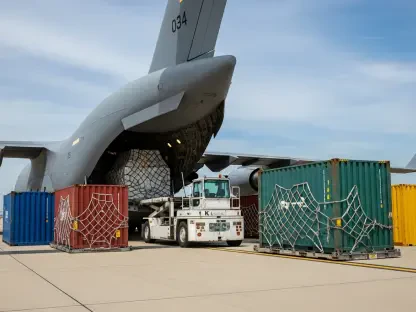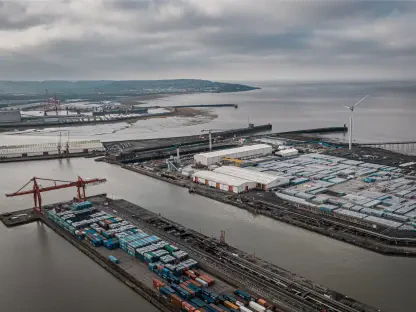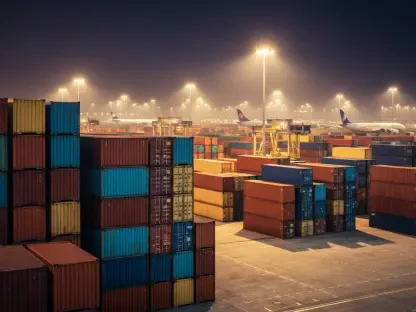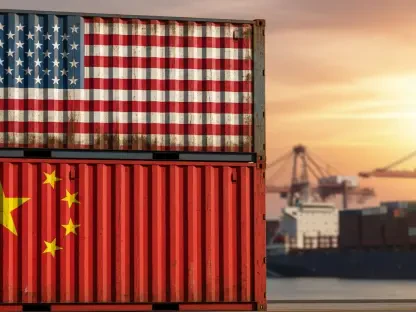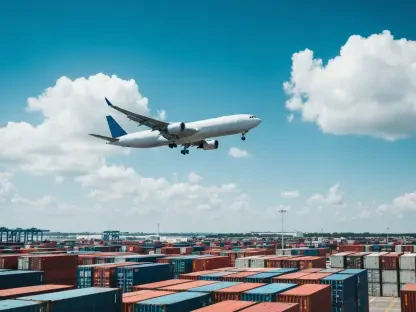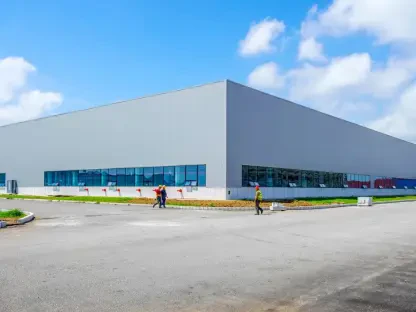The logistics and warehouse industry is undergoing a significant transformation, driven by advancements in robotics and a strong push towards sustainability. As we approach 2025, these changes are enhancing operational efficiency while addressing environmental concerns and improving the overall employee experience. The integration of robotics and sustainable energy solutions is fundamentally redefining how warehouses operate, making them more efficient, environmentally friendly, and conducive to a better working environment. This article delves into how robotics and sustainability are reshaping warehouse operations, highlighting key trends and innovations.
The Rise of Humanoid Robotics in Warehouses
Robotics has become a cornerstone of modern warehouse operations, offering unparalleled precision and efficiency. The UK robotics market is projected to grow annually at 17.37% through 2029, reaching a market volume of £2.5 billion by the end of the decade. This growth is largely fueled by the adoption of artificial intelligence technologies and governmental support for digital transformation. Companies like Tesla and Boston Dynamics are at the forefront, developing humanoid robots capable of performing complex tasks traditionally handled by humans.
These robots are not only improving compliance and stock counting but also reducing human error and operational delays. For instance, Iron Mountain’s collaboration with Dexory to deploy AI-powered mobile robots showcases the potential of these technologies. These robots can scan 15,000 locations per hour, allowing human workers to focus on more strategic tasks. This integration signifies a major technological leap, making warehouse processes more intelligent and autonomous.
The rise of humanoid robots in warehouses represents a game-changing shift, enabling more intelligent and autonomous operations. As these robots become more advanced, they are expected to play an increasingly vital role in streamlining warehouse processes and enhancing overall productivity. The humanoid robot market is projected to reach USD 1.3 billion by 2030, underscoring the growing importance of these technologies in the logistics industry. The ongoing development and deployment of these robots indicate a future where warehouses will operate with heightened efficiency and minimal human intervention, drastically altering the landscape of logistics operations.
The Push for Sustainable Energy Solutions
Sustainability is another major trend reshaping the logistics industry. The final quarter of 2023 marked a significant milestone for the UK, with renewable energy accounting for 47.3% of total electricity generation. This shift is crucial in the face of rising energy costs and geopolitical disruptions, such as the conflict in Ukraine, which have impacted the supply of non-renewable energy. The logistics sector is under intense pressure to adopt sustainable practices, with mandates like the April 2030 requirement for all warehouses to achieve an EPC B rating to sign new leases.
Companies are responding by innovating with solar-based energy solutions and other green technologies. For example, Iron Mountain’s Rugby Campus Energy Centre integrates rooftop solar PV, battery storage, and combined heat and power systems to provide 24/7 solar electricity. This approach not only supports sustainable operations but also reduces dependency on traditional power grids. These initiatives are essential for meeting environmental targets and ensuring long-term sustainability in warehouse operations.
As more warehouses adopt similar green technologies, the industry is likely to see a significant reduction in its carbon footprint. The push for sustainable energy solutions is reshaping warehouse operations by making them more eco-friendly and cost-effective. By integrating renewable energy sources and other green technologies, warehouses can achieve greater energy efficiency and sustainability. These efforts are crucial for meeting environmental goals and enhancing the resilience of warehouse operations against future energy challenges. The ongoing shift towards green technologies is setting a new standard for sustainability in the logistics industry, paving the way for a more sustainable future.
Transforming the Employee Experience
The logistics industry is also focusing on improving the employee experience to address labor shortages and enhance workforce engagement. The “Great Resignation” highlighted the need for better working conditions, and employers are now making concerted efforts to create a supportive work environment. Traditionally, warehouse jobs have been seen as transient roles with minimal engagement. However, this perspective is changing as employers recognize the importance of catering to a diverse workforce.
Amenities such as prayer rooms, communal dining areas, and quiet rooms for personal use are becoming more common, especially in diverse regions like the UK’s Golden Logistics Triangle in the Midlands. By providing spaces that respect and accommodate employees’ personal and cultural needs, warehouses can foster a more inclusive and motivated workforce. This approach not only helps retain current employees but also attracts a broader talent pool, addressing labor shortages and enhancing overall productivity.
The transformation of the employee experience is reshaping the logistics industry by making it more appealing and supportive for workers. Employers are investing in amenities that create a positive work environment, acknowledging the importance of employee satisfaction and well-being. This holistic approach is essential for addressing labor shortages and fostering a motivated workforce. As these changes take root, the logistics and warehouse sector is likely to see improved employee engagement and retention, contributing to overall operational efficiency. By focusing on the employee experience, warehouses can create a more supportive and engaging work environment, ultimately enhancing workforce productivity and satisfaction.
The Convergence of Technology and Sustainability
The logistics and warehouse industry is undergoing a remarkable transformation, driven by advances in robotics and a robust commitment to sustainability. As we approach 2025, these changes are significantly boosting operational efficiency, addressing environmental issues, and enhancing the employee experience. Robotics and sustainable energy solutions are fundamentally changing how warehouses function, making them more efficient and eco-friendly while also improving working conditions for employees.
This article explores how these two critical factors, robotics and sustainability, are revolutionizing warehouse operations. It sheds light on key trends and innovations that are reshaping the industry. From automated guided vehicles (AGVs) that streamline inventory management to solar-powered facilities that reduce carbon footprints, the integration of cutting-edge technologies is setting new standards in the logistics sector. This evolution not only maximizes productivity but also ensures that environmental and employee welfare are prioritized, paving the way for a more sustainable and efficient future in warehousing.



